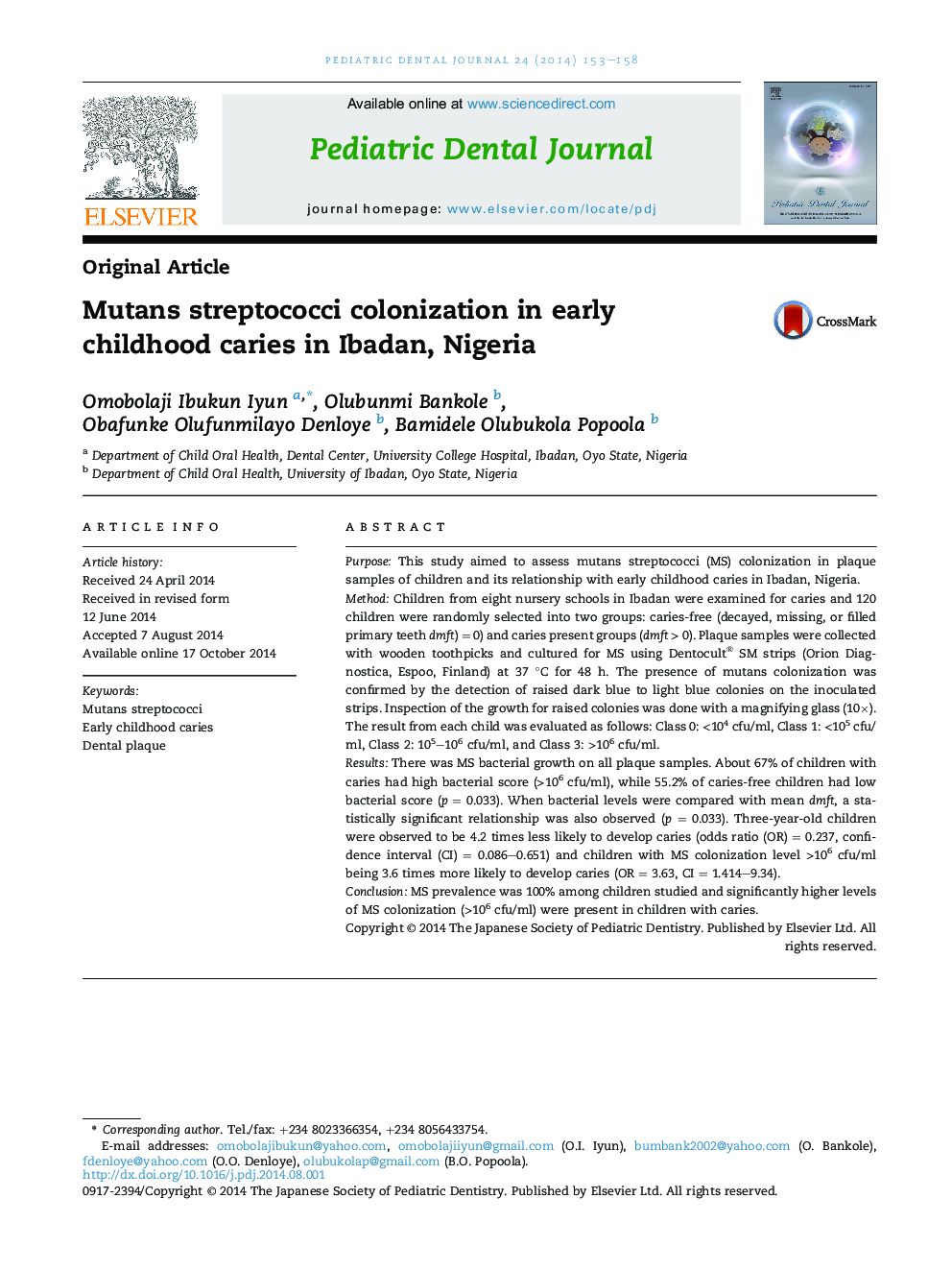| Article ID | Journal | Published Year | Pages | File Type |
|---|---|---|---|---|
| 3171487 | Pediatric Dental Journal | 2014 | 6 Pages |
PurposeThis study aimed to assess mutans streptococci (MS) colonization in plaque samples of children and its relationship with early childhood caries in Ibadan, Nigeria.MethodChildren from eight nursery schools in Ibadan were examined for caries and 120 children were randomly selected into two groups: caries-free (decayed, missing, or filled primary teeth dmft) = 0) and caries present groups (dmft > 0). Plaque samples were collected with wooden toothpicks and cultured for MS using Dentocult® SM strips (Orion Diagnostica, Espoo, Finland) at 37 °C for 48 h. The presence of mutans colonization was confirmed by the detection of raised dark blue to light blue colonies on the inoculated strips. Inspection of the growth for raised colonies was done with a magnifying glass (10×). The result from each child was evaluated as follows: Class 0: <104 cfu/ml, Class 1: <105 cfu/ml, Class 2: 105–106 cfu/ml, and Class 3: >106 cfu/ml.ResultsThere was MS bacterial growth on all plaque samples. About 67% of children with caries had high bacterial score (>106 cfu/ml), while 55.2% of caries-free children had low bacterial score (p = 0.033). When bacterial levels were compared with mean dmft, a statistically significant relationship was also observed (p = 0.033). Three-year-old children were observed to be 4.2 times less likely to develop caries (odds ratio (OR) = 0.237, confidence interval (CI) = 0.086–0.651) and children with MS colonization level >106 cfu/ml being 3.6 times more likely to develop caries (OR = 3.63, CI = 1.414–9.34).ConclusionMS prevalence was 100% among children studied and significantly higher levels of MS colonization (>106 cfu/ml) were present in children with caries.
